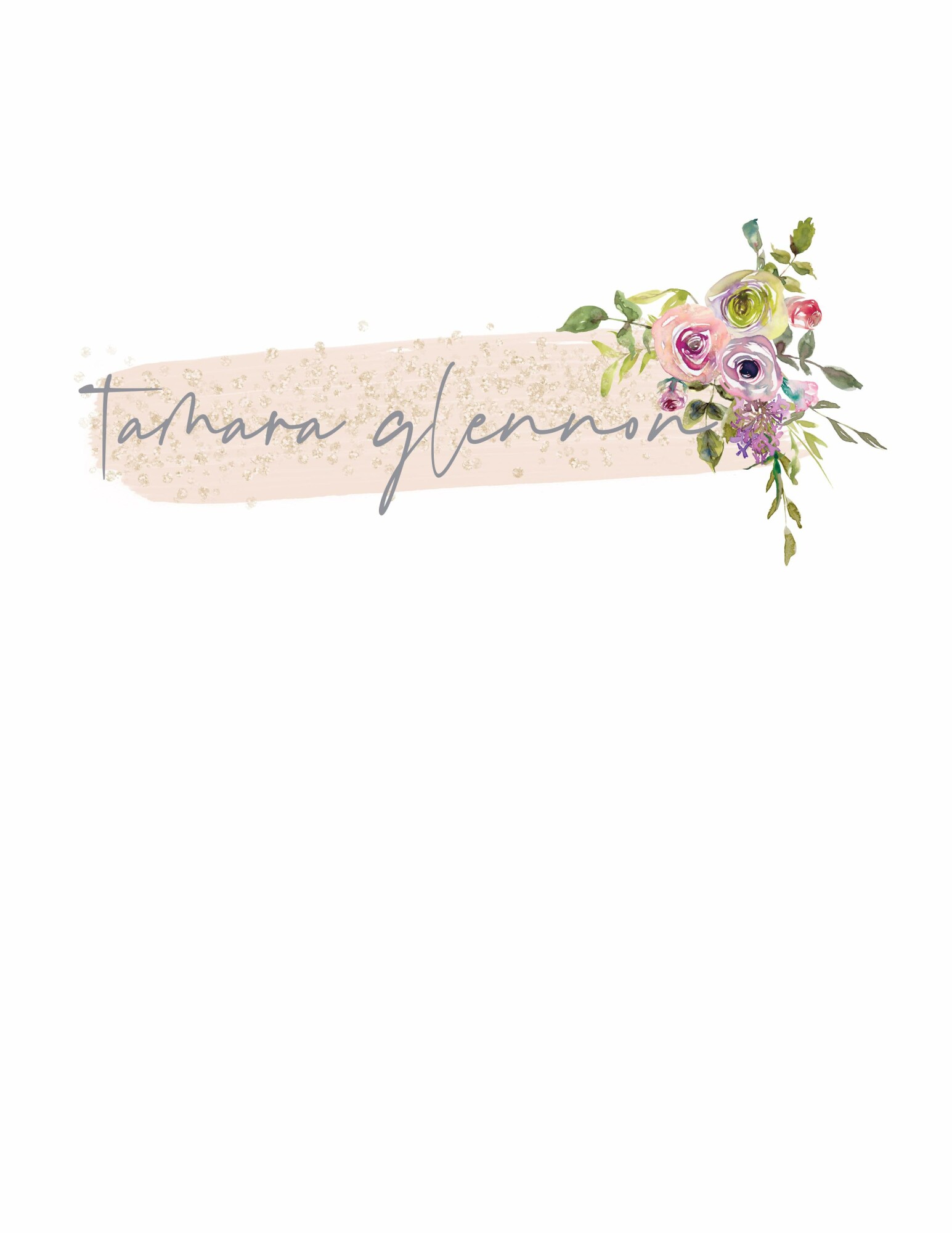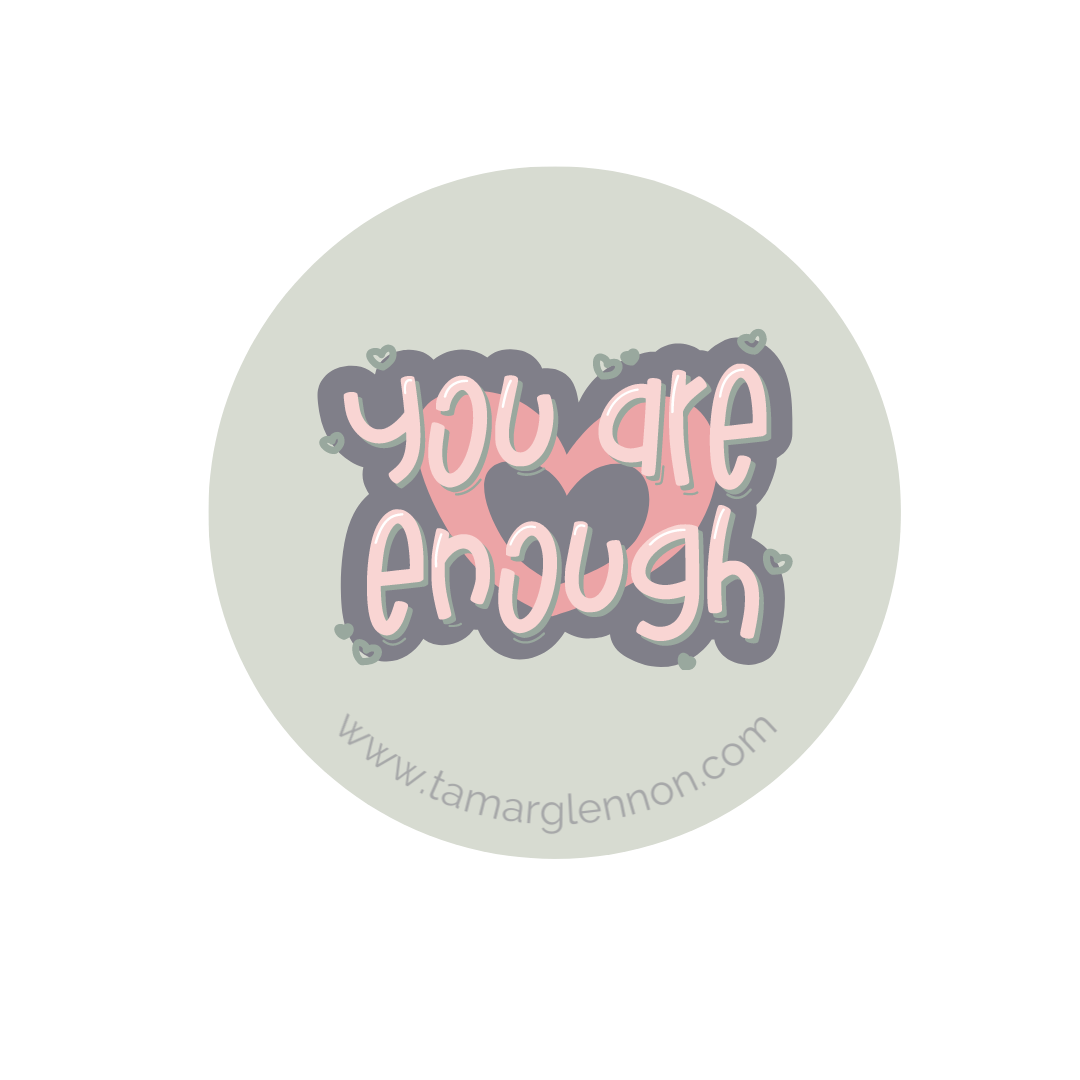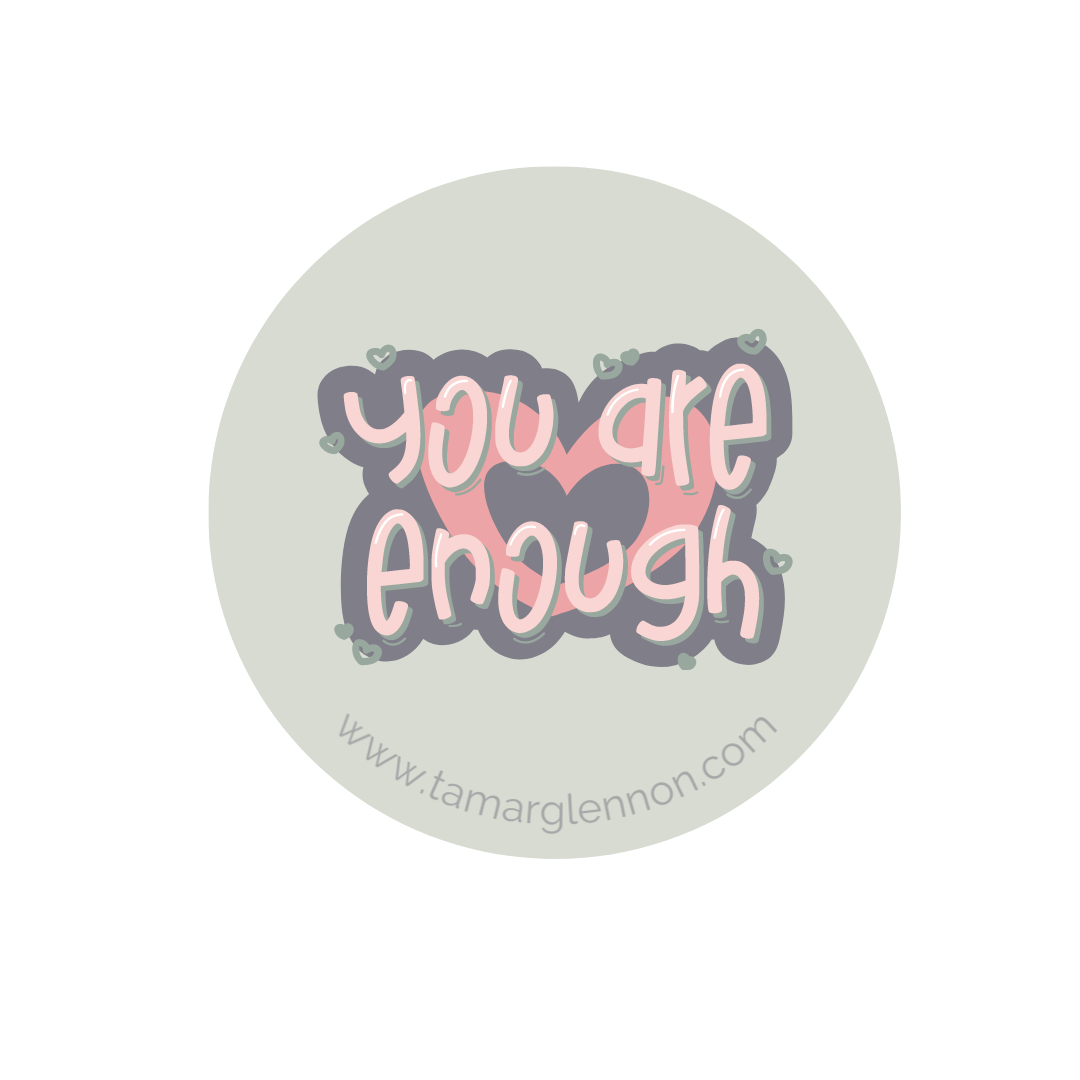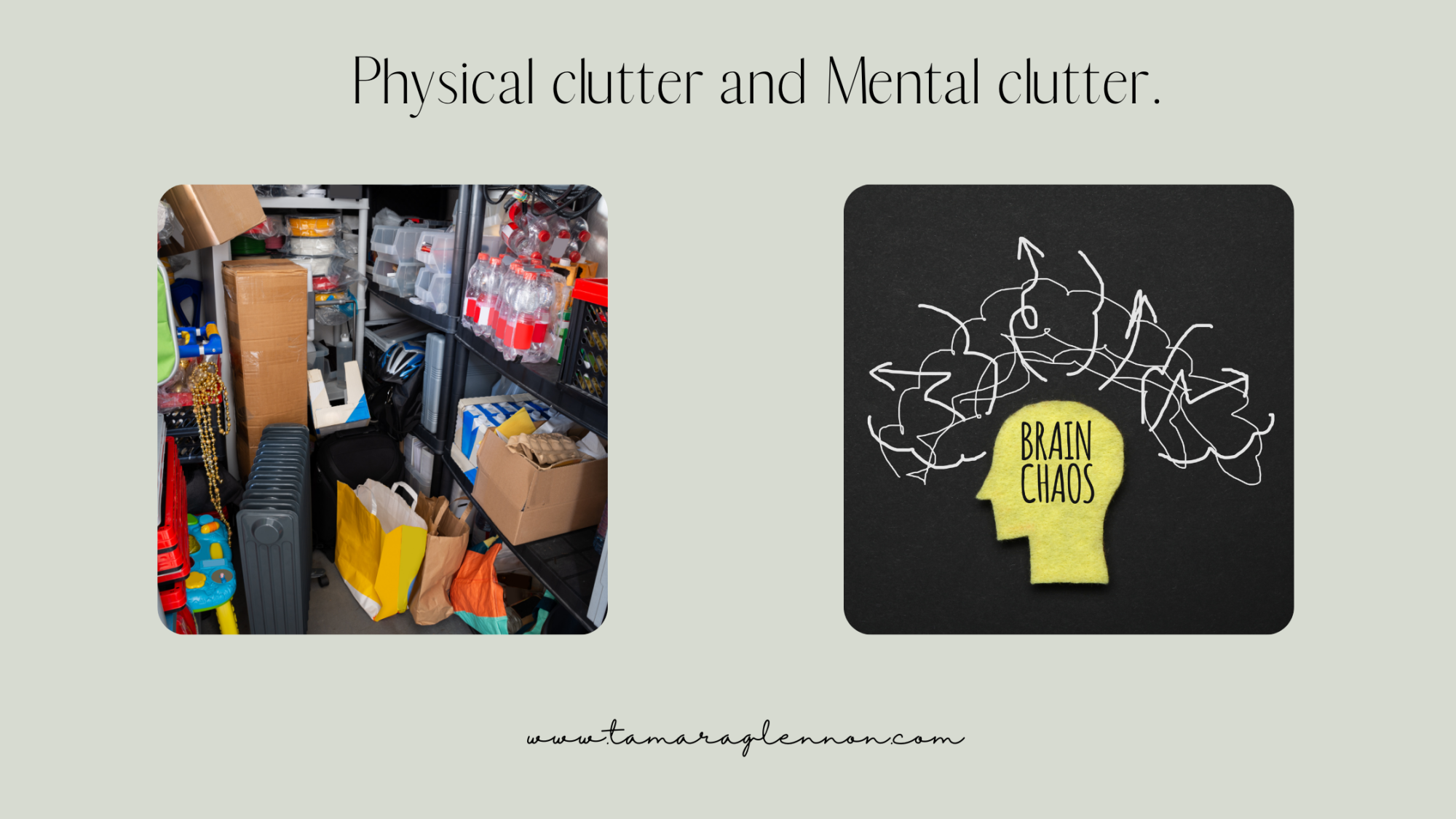
What is mental clutter and why should you care?
There’s Physical Cutter & Mental Clutter
Clutter can come in many forms. For simplicity's sake, I'd like to break it down into two main types. These are physical and mental. Each has a heavy impact on your stress levels. They both are likely to play a role in keeping you from creating calm in your life. Therefore, I think it's important to take a look at each type, definite it, and examine ways both can negatively affect you.
Physical Clutter
Physical clutter is easy to understand. This is the kind of mess you can see. It's the piles of clothing, papers, dishes, and more that are strewn around your home or office. It's the overabundance of things you've been holding onto for years because they're sentimental or you might use them one day. Physical clutter can even be the many tabs you keep open in your computer browser or the tons of media you consume each day. These things can be seen. They consume large amounts of your resources such as time, space, and money.
Mental Clutter
Mental clutter isn't as simple to define. It involves the overload of information, along with nagging emotional issues, that overwhelm your mind. This type of internal congestion can consist of things such as your never-ending to-do list, negative internal dialogue, relationship demands, old grudges, or habits that don't serve you. The source of such mess usually lies in emotions like fear, regret, worry, guilt, or shame. Identifying the types of mental issues that are cluttering your brain can lead to purging yourself of them.
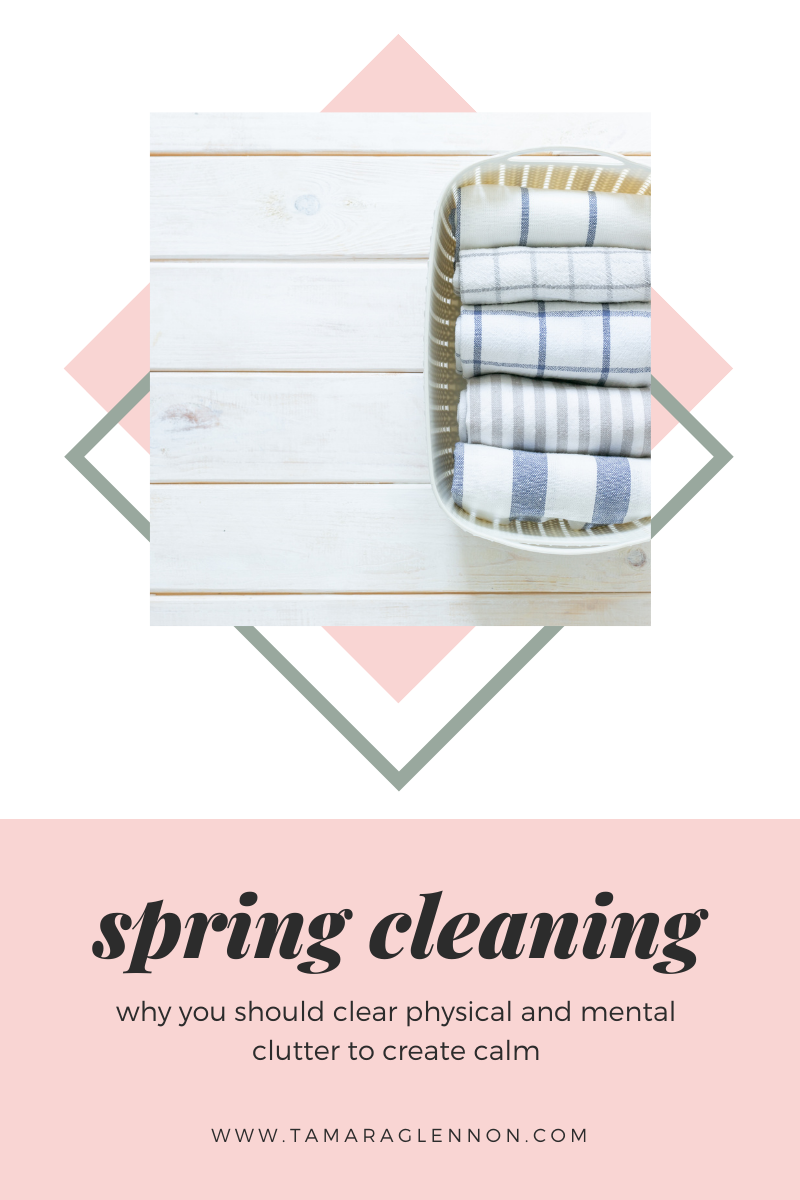
Effects of Clutter
Ridding yourself of clutter, both physical and mental, can truly increase your feelings of happiness and calm. It can lead to less stress and overall greater well-being. The negative effects of too much clutter are astounding. Decreased mental health is one of the biggest issues to come of surrounding yourself with all sorts of clutter. Studies show that mental hygiene is improved when clutter is kept under control, both in the home and in the workplace. Too much physical clutter impairs visual processing. It can be incredibly distracting to see lots of piles and messes in your surroundings, leading you to miss cues regarding people's emotions and other important information. Your cognition and clarity of mind are adversely affected by excess mental clutter. You simply can't think straight when you've got a whirlwind of thoughts and emotions swirling around in your head.
This is merely an overview of the ramifications that come from physical and mental clutter. However, the information above should give you some insight into how important it can be to clean things up in both your physical world and within your mind. Doing so can lead to tremendous benefits within your world, including more of the elusive calm you've been seeking. What is the biggest challenge for you? Mental or physical clutter?
Love what you read? Subscribe for updates.
Follow me on Social Media:
Join my group to learn more about how to support your mental health and well being.
Love the gram? Follow here.
Jumped on the Tik Tok Trend? Find me here
Want to shop with a purpose? Check out my etsy shop where I donate to Project Semicolon.
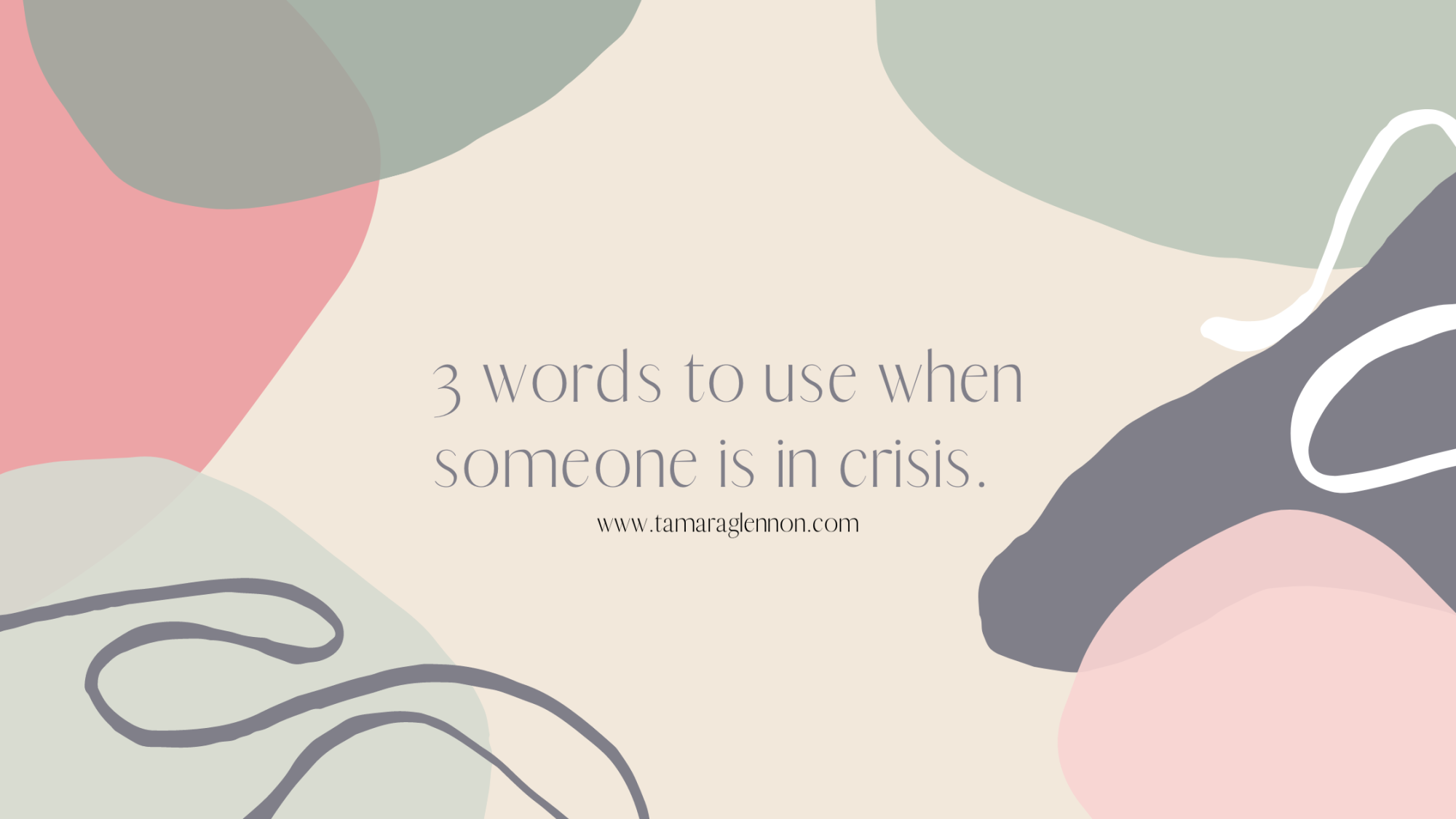
Use these 3 words when someone is in a crisis.
Have you ever been in a situation where your friend, family member, neighbor or anyone else comes to you when they are struggling. They open up to you and say "I am really having a hard time right now." It can feel very intimidating knowing what to say. You are paralyzed with fear worrying that you may say the wrong thing. I am here to help you and ease those fear. These are the simplest things you can say. It is proven that they can help someone in a crisis situation. Data from the Crisis Text Line has found that these 3 words pack a punch when it comes to helping young people. Let's get to it.
1. Smart. "You are so smart for reaching out." "It is smart for asking for help."
That's it. Smart. A word we should use more, not only when in a crisis but all the time. You can never say it too much.
2. Proud. "I am so proud of you for asking for help." "You should be very proud of yourself. This is not easy."
3. Brave. "You are very brave for telling me how you're honestly feeling." "Being vulnerable is not easy. I am proud of you."
It Is very possible that this could be the shortest blog post ever but it is also the simplest tactic to help someone.
Post these on your mirror, make a note on your phone, add these to stick notes, and put them everywhere. It could save a life.
If you are in a crisis reach out to the Crisis Text line.
In the US text HOME to 741741
In the UK text HOME to 85258
In Ireland text HOME to 50808
Love what you read? Subscribe for updates.
Follow me on Social Media:
Join my group to learn more about how to support your mental health and well being.
Love the gram? Follow here.
Jumped on the Tik Tok Trend? Find me here
Want to shop with a purpose? Check out my etsy shop where I donate to Project Semicolon.
Hearing your loved one say that "I wish I was dead." is the most jarring thing to hear. Here is what to do if your loved one says this.
Read more...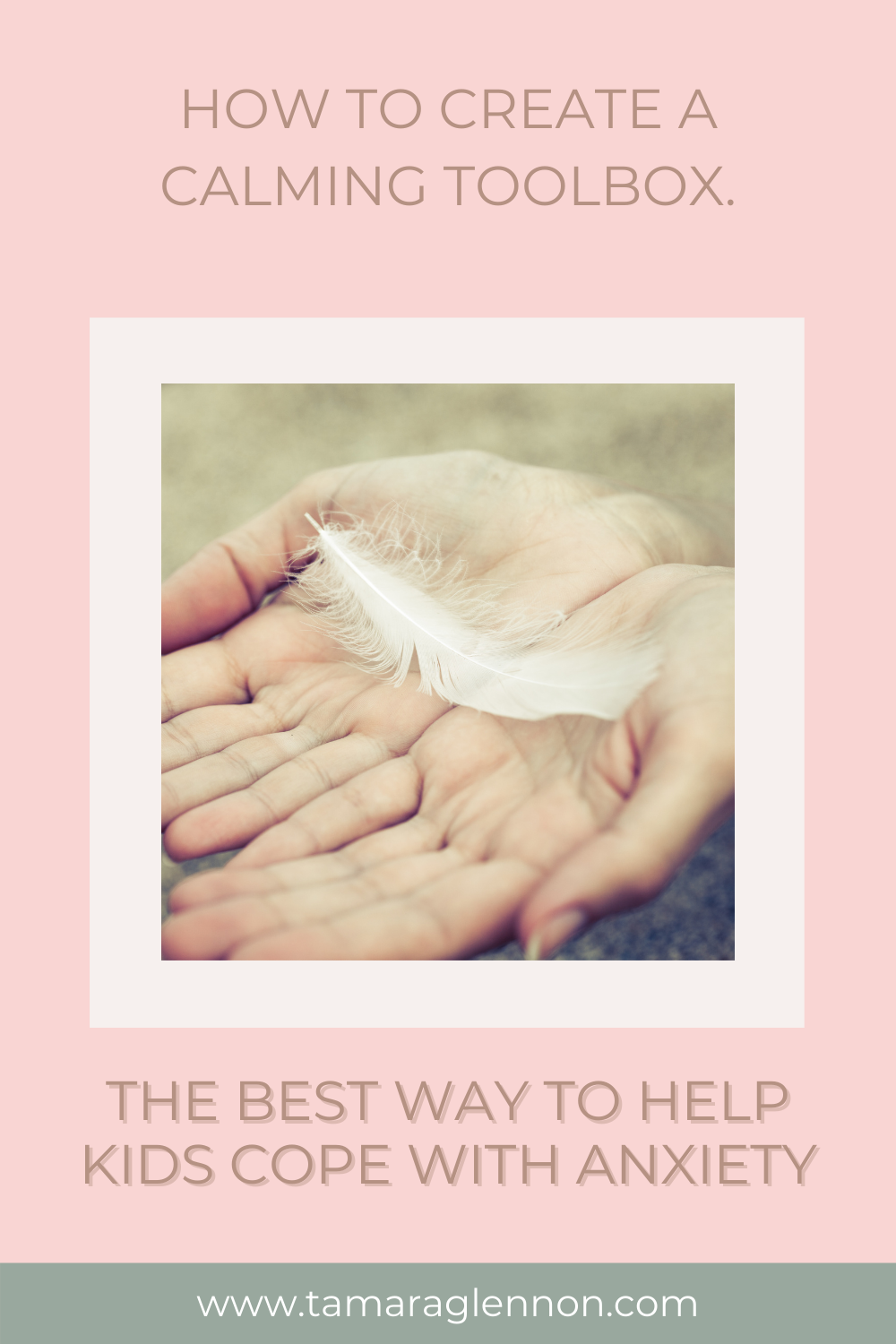
The best strategy for anxious kids, a toolbox!
Worrying is a normal feeling that we all have. It is a natural response to stress. However when your anxiety takes over your daily thoughts and impacts your everyday life then it could be something more than just worrying.
When my oldest was 4-5 yrs old I remember her complaining a lot of stomachaches. All. the. time. We did countless numbers of tests and every test result came back normal. Finally, a doctor suggested to me that she could have anxiety. At 3-5 yrs old, it is difficult for a young toddler to articulate how they are feeling. Often anxiety can manifest in physical symptoms.
- Stomach pain
- Nausea
- Biting nails
- Picking at skin
- Sleep disturbances
- Tantrums
- Crying
- Avoidance
- Irritability
Now I know that some of these "symptoms" are common for this age group, however if you have more of these symptoms on a regular basis it's a good idea to chat with your doctor.
After 15 years of helping my daughter manage her anxiety, I have learned a few tips and tricks.
A toolbox for coping with anxiety.
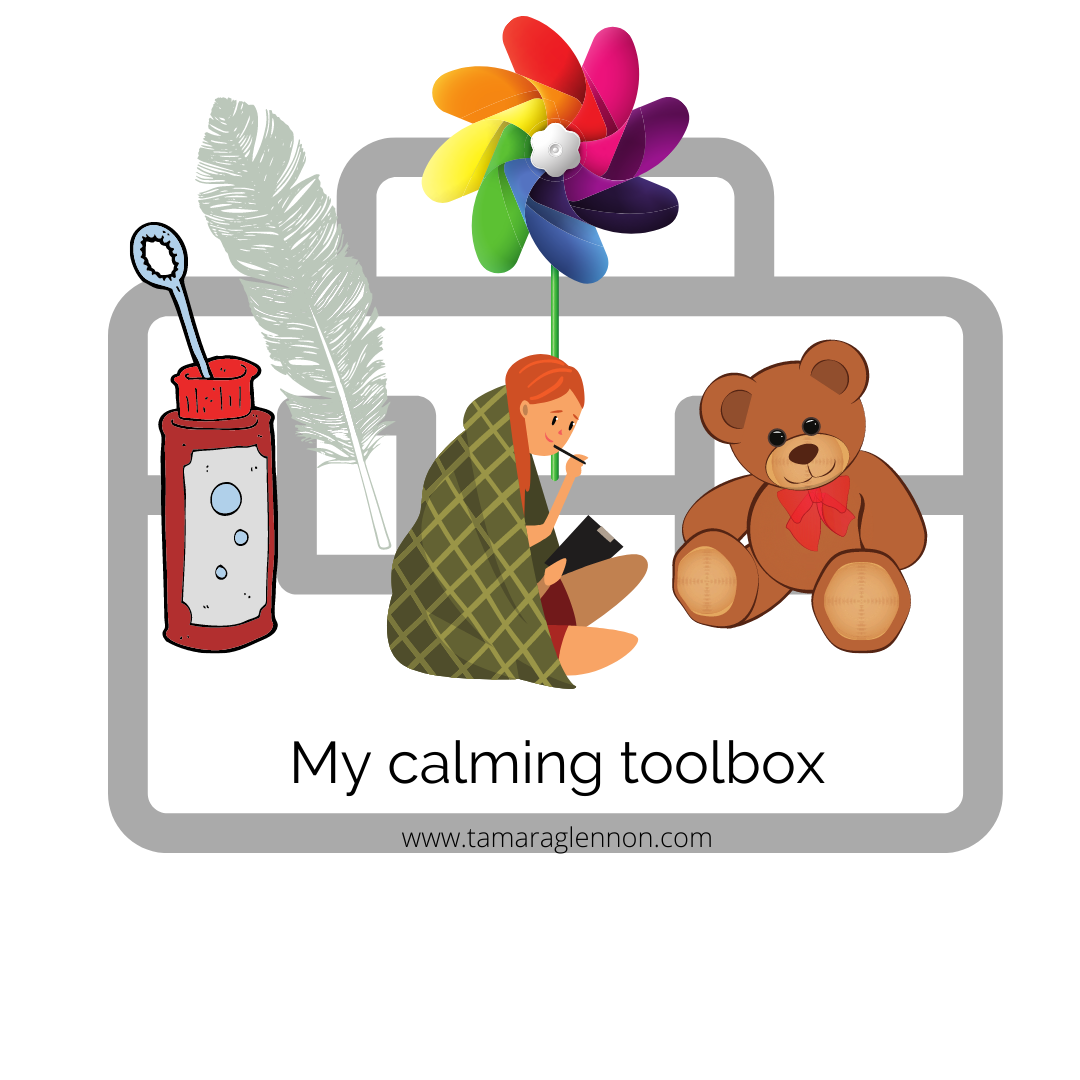 A few things you need in your toolbox are feathers, bubbles, a pinwheel, a weighted blanket, and a teddy bear. One of the best things you can teach your anxious child is how to breathe. Deep belly breaths are the best thing to slow down your racing heartbeat which will help calm your mind.
A few things you need in your toolbox are feathers, bubbles, a pinwheel, a weighted blanket, and a teddy bear. One of the best things you can teach your anxious child is how to breathe. Deep belly breaths are the best thing to slow down your racing heartbeat which will help calm your mind. Teddy Bear: I always suggest starting with a teddy bear or their favorite stuffed animal. Have them lay down on the floor on their back. Place the teddy bear on their belly. Take a big belly breath and make the bear move up while your breathing in. As you exhale watch the bear go down. This is a perfect way for kids to learn big belly breaths.
Bubbles: Practice taking a big belly breath and slowly blowing bubbles. If you blow too hard or fast the bubbles pop, so big slow belly breaths are perfect.
Feather: Practice taking a big belly breath and try to blow the feather up in the air.
Pinwheel: Practice taking a big belly breath and slowly blow the pinwheel and watch it spin. While it is spinning talk about the colors and what else can you name with those same colors. "I see orange and blue. What else is orange and blue?"
Coloring: Print out their favorite coloring page and color. Coloring is very therapeutic.
Learning breathing techniques is so incredibly helpful for kids that are feeling overwhelmed. The key is to practice them daily. Don't wait until they are already very worried. It is much harder to calm down.
My last tip to help manage anxiety is distractions.
Sour Candy: A piece of very sour candy can be just enough of a distraction to snap the brain out of an anxiety attack. I would encourage you to talk about the taste, the texture, the flavor (is it lemon, lime, sour cherry), do your cheeks hurt when your eating it, does it make your eyes water? These are all ways to help a child distract from their anxiety attack.
Her favorite distraction tip is the 5,4,3,2,1 technique. It is very simple but has a huge impact. It serves to somewhat "snap" their mind out of what is worrying them. This is how it works
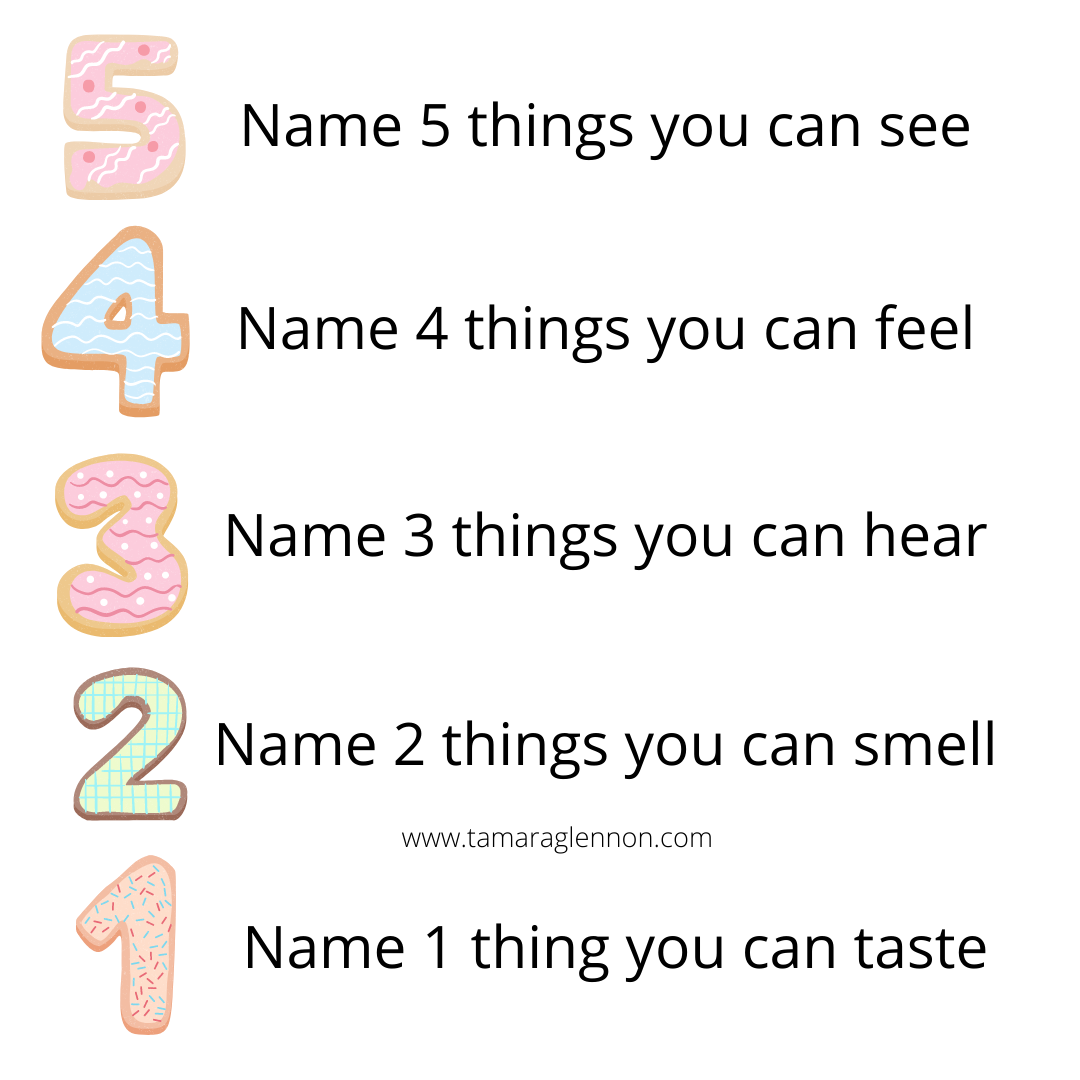
If after going through the 5,4,3,2,1 and they are still feeling anxious, repeat it but have them go a little slower. Ask them to elaborate.
These are a few of our tried and true coping skills for when anxiety gets to be overwhelming. Give them a try and let me know which is your favorite. Anxiety does not have to take over your little ones' days.
If you would like help creating a calming toolbox reach out to me and I am happy to create a custom toolbox for you.
Disclaimer:
I am not a doctor. This blog was created to share what I have learned as a mother to 4 kids. 2 of which suffer from generalized anxiety disorder with panic attacks and major depressive disorder. This was created for informational purposes only and should not be used in exchange for medical advice.
Love what you read? Subscribe for updates.
Follow me on Social Media:
Join my group to learn more about how to support your mental health and well being.
Love the gram? Follow here.
Jumped on the Tik Tok Trend? Find me here
Want to shop with a purpose? Check out my etsy shop where I donate to Project Semicolon.
Suicidal ideation can be passive or active. What is the difference?
Read more...